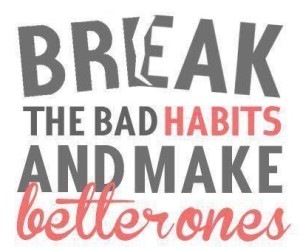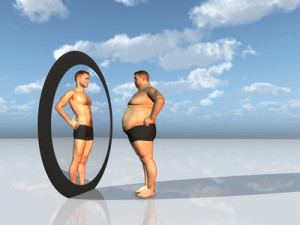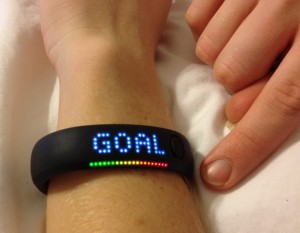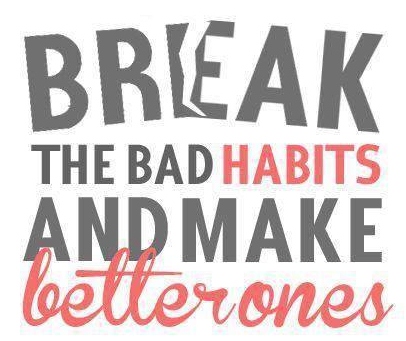 Are you guilty of one (or several) of these sneaky weight loss culprits? Learn how to break these common bad eating habits – for good, and establish healthy ones to take their place.
Are you guilty of one (or several) of these sneaky weight loss culprits? Learn how to break these common bad eating habits – for good, and establish healthy ones to take their place.
 Skipping breakfast
Skipping breakfast
This might seem like a calorie-saving idea, but really it’s just an invitation to eat more at lunchtime. Breakfast provides fuel to move through the day, and when you have a well-balanced breakfast , your blood sugar levels will be more stable, and you’ll feel energized instead of tired and cranky.
The solution:
Breakfast is something you can think about ahead of time. Stock up on easy grab-and-go foods like Greek yogurt, almond butter on whole grain bread, oatmeal. And if you don’t feel ready for food first thing in the morning, eat at the first opportunity that feels comfortable. This could be late morning, which will help you to eat less later when mealtime rolls around.
If you feel a little “Tight” in the morning and avoid eating breakfast, try starting with a warm beverage and sip slowly. also drink a glass of room temperature water. If that does not help, you may have a too tight “fill” in your Lap Band or may be prone to eating too much at night causing you to be too tight in the morning. Try watching your portions at night and avoid late night snacking after diner.
 Mindless munching throughout the day
Mindless munching throughout the day
Do you snack while doing simultaneous activities, such as opening your mail, sending texts or watching TV? multitasking while eating takes away from the pleasure of every bite, and detracts from your ability to realize that you are getting full.
The solution:
The problem is not necessarily the food itself, but how much you’re having. By putting snacks in a small bag, bowl or plate, you become more aware of what (and how much) you’re consuming. Make your own 100-calorie pack by putting healthy foods, like nuts, trail mix, fruit or veggies in zippered bags. These types of foods will keep you energized through the day, unlike the highly-processed packaged snacks you get at the store.
 Stress-eating
Stress-eating
Poor food choices that seem comforting during a stressful or emotional moment can easily lead to discomfort later on. If it makes you feel guilty or bloated, then it is not a comfort food.
The solution:
Keep a food journal. Putting thoughts and actions down on paper helps things become less hypothetical and more real. Write about your feelings in relation to the food choices you made that day. Do you see a pattern? This practice can help you eat more mindfully, identify trigger points during stressful moments and understand how your feelings impact eating habits.
 Bedtime snacking
Bedtime snacking
Usually, bedtime snacking occurs out of habit, not hunger. Even after a big dinner, many people find comfort in sitting on the couch and watching TV while having a snack. However, it’s the worst time of day to load up on calories, since you’re using the least amount of energy at night.
The solution:
To curb excessive snacking at night, try planning a healthy snack in advance, like a yogurt with a small serving of cereal. You can even put the snack on your kitchen counter so your choice is right in front of you, and you’ll be more likely to keep your portions in check and less likely to venture off course. Why? Taking away the spontaneity of a snack makes it less exciting — and you may end up skipping it all together.
 Impulsive food shopping
Impulsive food shopping
People say they don’t have enough time to properly food shop, so they whisk in and out of the store and don’t pay attention to what they are buying.
The solution:
This daunting task can be made easier with a plan. Look at food labels and develop a “safe list” of healthy staple foods that are easy to cook. This initial legwork will make life easier later, because you’ll be prepared with choices you can feel good about.
 Setting unrealistic goals
Setting unrealistic goals
Aiming to lose 10 pounds by next Saturday for a high school reunion is like a self-fulfilling prophecy saying, “I knew I couldn’t do it,” since setting unrealistic goals often leads to fad diets or failure. The most important thing is not about how much or how quickly you can lose weight, but about how long you can keep it off.
The solution:
Set realistic, obtainable objectives. After all, it takes about 21 tries to change a habit. The closer you follow a plan you can live with, the more likely it is you will stick with it. Figure out how you can make changes that will work for you, and recognize what your trigger points are. Then, work on one thing at a time, not five. Remember: Dieting success is not a roller-coaster ride; losing three pounds and never gaining it back is better than losing 20 pounds and gaining it all back.
 Snacking right before dinner
Snacking right before dinner
It’s easy to zone out and eat a snack while deciding what to have for dinner, or to go a little overboard with taste-testing food as you cook. However, food that never reaches the plate and goes straight to your mouth may not register as consumption in your mind — yet your body will certainly feel it!
The solution:
Satisfy that pre-dinner hunger with something less caloric and hold out for the real meal. Chew gum while you cook, or eat your salad then instead of having it with your dinner. Before you put something in your mouth, always stop and ask yourself if the food is more important than losing weight or getting healthier. Most likely it won’t be.
 Change One Small Habit at a Time
Change One Small Habit at a Time
Small habit changes work because you build success quickly. Each time you follow through on a small habit, you build your confidence. You feel more in control. Find your way to steadier ground by committing to a few small, easy-to-do healthy habits. You’ll keep progressing toward your goal, while your small habits build into larger habits that can permanently change your behavior!
Keep It Simple
The most important thing to remember when you choose a small habit is to make it something you can do. Set yourself up for success.
Over time, you can ramp up that small habit to the next level for even better results. That’s the beauty of making small habits — one habit becomes routine and then you add another small habit to it. You keep moving steadily in easy steps that move you toward big change.
 Link the habit to something that motivates you.
Link the habit to something that motivates you.
Changing old behaviors takes work, so you need a good reason to make a new habit worth your effort. Improving your health is a great reason. If that inspires you, terrific! But if it doesn’t, try picking something more concrete and immediately noticeable.
If you’re drinking water instead of soda, one way you could motivate yourself is to save the money you’d spend on soda to splurge on something you don’t usually get for yourself. Your motivation can also be more about how you feel or think. Maybe you feel more healthy and natural when you drink water.
 Create a trigger to remind you what to do.
Create a trigger to remind you what to do.
You may think of a trigger as something negative that leads you to an unhealthy activity. Like feeling sad can be a trigger to overeat. But a trigger can also be positive.
You can use a trigger to remind you to do your chosen habit. It can be as simple as setting an alarm or selecting a good place to stick a note or even wearing a piece of jewelry or rubber band on your wrist to remind you when you see it to do the new habit. You need a trigger that you’ll notice, preferably at the time you’ve set to do the habit. To trigger yourself to drink water, for instance, you could: Create a food planner and add times during the day to have a glass of water. Associate your habit with something you do every day. For instance, whenever you turn on water to wash your hands, use it to trigger you to drink water.
 Talk to yourself.
Talk to yourself.
If you feel tempted to skip a workout or eat something you decided not to eat, simple thoughts like, “I always feel better after I walk” or “That doughnut is not part of my plan,” can keep the course of events in your favor.
Weight loss takes time. The small-habit approach won’t shed pounds overnight. But it can keep you on track without the jarring impact of a huge life change. Accumulating one small habit after another leads you to powerful healthy habits that you can use to keep your weight under control.


